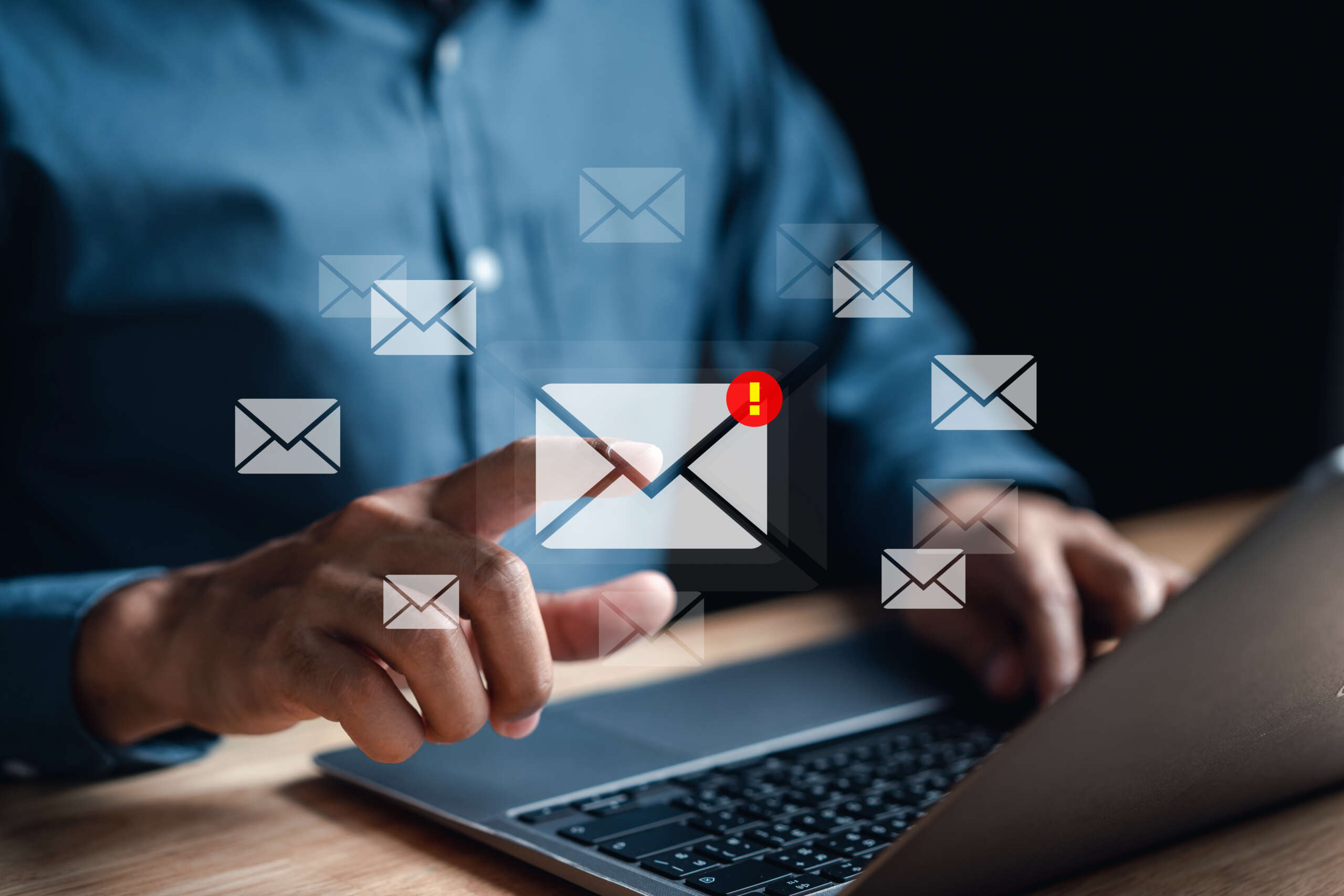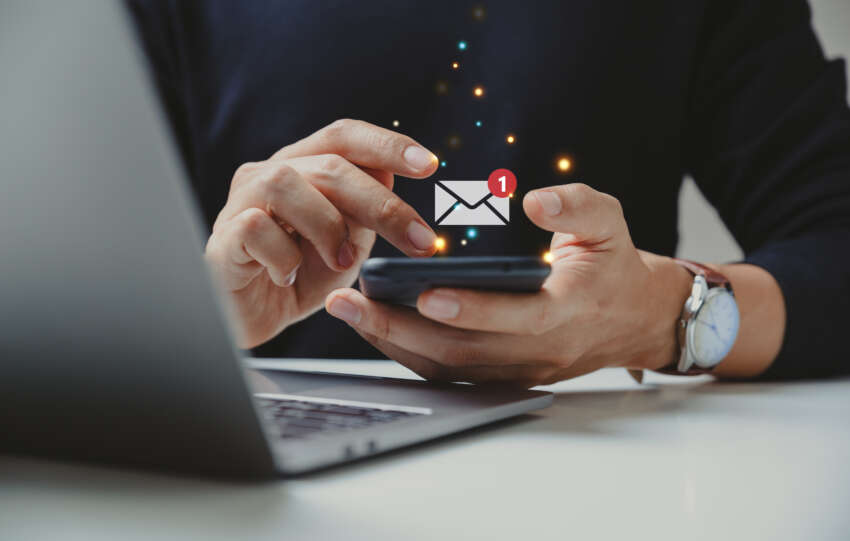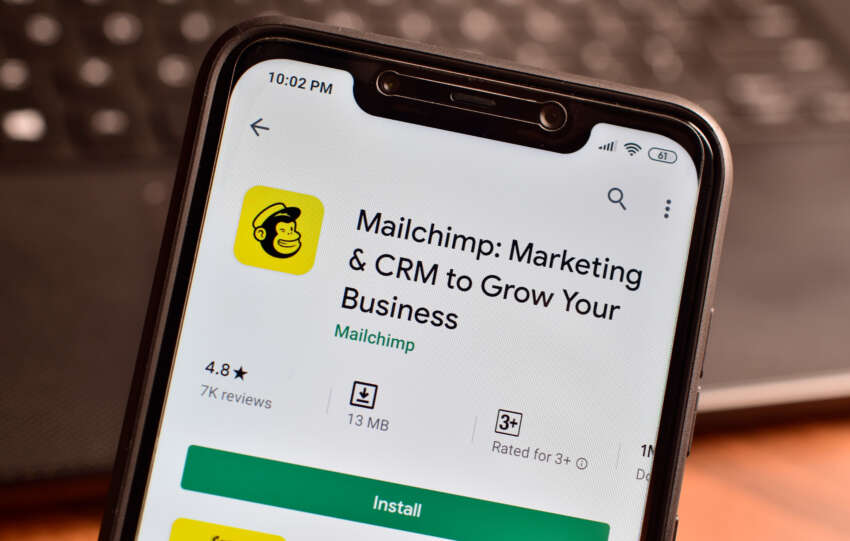7 Email marketing trends to plan 2021

In the post-COVID period, email open and conversion rates have enjoyed an increase by 31% and 22%, respectively. Since it provides businesses and customers to interact without making physical contact, I’d say email marketing is way ahead of the curve. But to develop an effective email marketing strategy, you must know the trends that will govern email marketing in 2021. In this post, we’ll discuss what these email marketing trends are and examples of each so you can implement them in your campaigns.
Use Hyper-Personalization
Hyper-personalization is more than just an email marketing trend. It’s something that needs to be present regarding every single email marketing campaign a brand might create.
All you need to do is dive deep into your customers’ data and invest in email marketing platformsthat carry artificial intelligence and machine learning tools. These will be able to create segments so small that correspond to your customers on a one-on-one basis.
To do that, you will need to study your customers’ behavior on your website and use marketing automation that will allow you to make the best out of the customer journey, with automated welcome, cart abandonment, and thank-you emails or personalized newsletters.

(Source)
RescueTime is a time-tracking software that monitors your online activity to help you become more productive. To do this, the tool sends regular emails regarding the hours you spent on certain activities and the most used apps during the period.
In this email marketing example, RescueTime generates dynamic content based on how much the user used the tool. This results in the creation of personalized emails tailor-made to subscribers.
Another example of hyper-personalization is Spotify’s Year in Music email.

(Source)
The app sends these interactive emails before the end of the year to show users the music they’ve listened to for the year.
Clicking on the link points you to the playlist in your app containing the songs you listened to the most. It’s a great way to look back on the year that was from your choices of music.
The examples above give email marketers the advantage of personalizing and automating at scale and creating emails targeted and look and feel tailor-made.
In the end, every subscriber will receive an email created and curated using their data, especially from them
Send Interactive Content
Instead of the usual text-image-CTA combination found in regular emails, you can stand out instead with interactive content.
This contains additional elements, animation, and features in the content that help spruce up your emails and increase conversion and engagement rates.

(Source)
Above is an example of an email with interactive content from Bose for their Black Friday campaign.
Instead of just showing you how much you can save by buying its headphones and speakers on sale, you need to scratch off the grey area on the email (just like you would on a scratch card) to view it.
It’s these little things that help differentiate your email from other businesses by getting them to engage with it in different ways.

In this example, Jot also shows you the possibilities of adding videos that people can watch from their inbox. You had to click a button to open a new window that would play the video back then. With interactive content, you don’t have to do it anymore.
This is one of the email marketing trends that has paved the way for businesses to deliver more fun newsletters that subscribers will love.
Appreciate Your Customers
Showing how much you appreciate your customers goes a long way.
There are benefits to showing gratitude to customers according more accessible to a studyconducted by MarketingProfs:
Open rates for anniversary campaigns were nearly three times as high: 34.4% vs. 12.9%.
Missing out on that revenue would be catastrophic, especially during a pandemic.
You see, COVID-19 has made the need to build email content for the customers and show them how important they are to you even more critical when it comes to the customer’s lifecycle.
So, showing your customers you’re their biggest fan and putting them right in the middle of your marketing automation strategy will create an emotional response – and connection – and help boost engagement, exposure, and loyalty.

(Source)
As you can see, Aesop is one of the brands that appreciate how their customers are there, even when they’re far apart, and they decide to give back to their community that way:

With closed stores – for everyone’s safety – one would argue that this email is counter-intuitive. But not when you make a prospect’s life easier by offering free shipping, which is a much-needed discount.
In that case, Aesop made sure to value prospects above anyone else by using a customer appreciation email that gives back to their community. This is a great way to engage subscribers by providing more than just kind words.
Customer appreciation – and therefore, customer appreciation email campaigns – are more than emails that target customers according to their position on the sales funnel. A thank-you email, a birthday email, or an anniversary email goes a long way. But so does an email that shows how much you appreciate your customers in trying times.
This goes hand-in-hand with appreciation emails.
Social justice is a theme that’s long overdue when it comes to email marketing, and the pandemic showed just that.
For better or worse, marketers deal with communities, and communities face several social issues daily. And content that doesn’t address those issues is, by default, not tailor-made.

(Source)
Emails like this from Aftershokz are a perfect example of taking a stand for the greater good. It educates people and helps them understand your position as a company.
Social justice themes need to be a staple in your content calendar, especially during the pandemic.
As marketers, you need to monitor the content your ideal audience is interested in and find the cause that would benefit your business — and would be in tune with your tone of voice and values — as much as it can help your audience.
Voicing your social concerns and making a firm stand give your audience the platform to discuss, engage with, and trust in your brand. It also shows your workforce’s values and the commitment you could have to a cause that would resonate with your prospects.

(Source)
As you can see above, McDonald’s chose to develop social justice content in this email marketing campaign and participate in thanking all frontline, health, and essential workers by providing free meals.
COVID-19 worked for the brand, helping it shape a more socially conscious image and, at the same time, thanking the NHS workers for all their hard work. This type of “thank-you” charity will help prospects trust your brand and connect with it.
Finally, note the “Spread the word” CTA that urges the recipients to let more people know, utilizing word-of-mouth marketing as well.
Leverage on User Generated Content
Regarding user-generated content (UGC), we’re not talking here about content curation.
Although you can compile content from different sites to send it to users for increased engagement, we’re referring to another type of UGC here: customer reviews and testimonials.
Getting 5-star reviews from customers is a trend that’ll never go away. Positive testimonials from happy customers are a sign that your business is going on the right track.
At the same time, you need to show subscribers that your customers are satisfied with your product or service that they left a review.
And what better way to showcase these than to send them as part of your email marketing campaigns?

(Source)
In this marketing email by capsule wardrobe company Cladwell, personal stories from users of the service on how the company helped them with their problem of having a closet filled with clothes.
Testimonials help educate prospective customers on what your business is about and generate more interest in your services. It could then lead to potential sales and revenue moving forward.
To get reviews to feature on your emails, check your Google My Business account and sites like Yelp, Facebook, and others. See if customers left positive reviews that you can use.
If your business doesn’t have reviews yet, you can send an email blast to customers asking for reviews.
Mix Plain-Text and HTML Emails in Your Marketing Automation
The battle between plain-text vs. HTML email design rages on.
The answer depends on who you ask — for some email marketers, designing and coming up with branded messages to send subscribers results in higher conversion rates. Others live by the simplicity and the non-salesy appearance of text-only emails.
However, it’s always better to use both and see which between the two performs the best. It’s what most brands do for their email marketing strategy.

The choice between plain-text or HTML email also falls on the message you want to convey to your audience.

(Source)
In the example above, Tupperware did a great job in taking the pandemic seriously with this no-nonsense text email. The company acknowledges COVID-19, and the brand’s independent reps sell their product and how customers buy them during the pandemic.
At the same time, Tupperware also sends HTML emails to subscribers. Here’s an example that showcases its snack-themed products, a livelier tone compared to the previous one.

(Source)
The examples above show that you should use an email design that fits the tone of the message. You don’t have to stick with just one — go with any design that you think converts best.
Take Care of Any Privacy Concerns
Privacy has always been a very sore topic for companies and a huge concern for consumers.
Many businesses have sent emails updating subscribers about their privacy policy in light of GDPR in 2018.

(Source)
The idea of GDPR is getting the consent of subscribers to send them marketing emails. If not, they can unsubscribe from your list to not receive these emails but still be part of your list for updates.
The rule is always to clean up your email list and never email those who haven’t permitted you to do so or haven’t interacted with your emails for quite some time.
While GDPR has helped prevent unwanted emails from being sent, some things can be done only by using email newsletter tools.
To make sure that you’ve got your prospect’s explicit permission when it comes to emailing them, you can do the following:
- Add a check-box to your email form that will state the consent the prospect is giving you and will link to a T&C’s page.
- Allow prospects to pick out the kind of newsletters they’d like to receive and the frequency they’d like to receive it in, the way BuzzFeed does. That way, having their permission is unavoidable.
- Put the unsubscribe button right there where your prospects can see it. Having prospects flag your email as spam won’t do you any favors in avoiding the spam folder or scoring better deliverability rates.
All in all, emailing people who don’t want to hear from you. Whether because they never agreed to or because they unsubscribed from your email list, it’s your job to keep away from them.
And this can’t happen without keeping your list clean and your opt-ins double.
Takeaways from This List of Email Marketing Trends for 2021
Email marketing during the pandemic has grown even more potent thanks to the trends for 2021 discussed above.
In a way, COVID-19 encourages companies to leverage emails into their marketing strategies, which brought forth innovative ways to reach out to their customers more effectively.
Using email automation tools to execute these trends, you should be able to enjoy even higher open and conversion rates to help push your business to the top.





